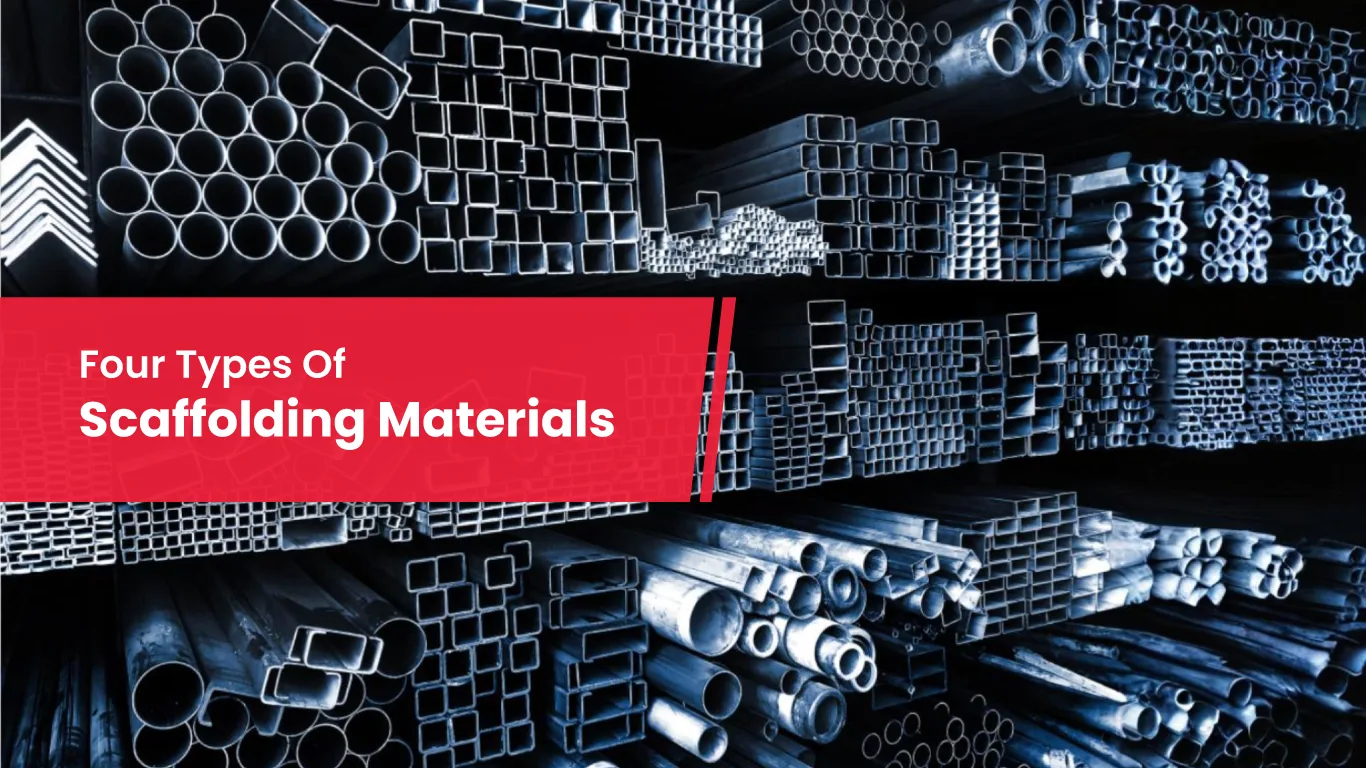In today’s construction industry, it’s always crucial to choose the right scaffolding material. This will ensure safety and cost-effectiveness for the project. There are less incidents of accidents when the scaffold is of the right material. But, are you aware about the materials meant for designing scaffold components? Well, if you don’t know anything, then read further.
In this article, we will cover four materials that you can use for the scaffold. As you scroll through, you will also be able to make up your mind on which material to choose.
what material is scaffolding made of?
Scaffolds are usually built with parts of different materials. Let’s check out the materials and how they are different with respect to its properties.
Wood
Since many years, many contractors have been using wood for a scaffolding structure. Among its types, timber is a suitable material for a working platform. Apart from being durable, this kind of wood is light in weight. Timber is also affordable and available in different regions. However, it is not as strong as metal. The wood can’t sustain the weight of many workers at the same time.
Beyond everything else, timber can rot or crack easily depending on the climatic conditions. Hence, many workers don’t prefer using timber in the modern age. On the other hand, bamboo is used to make many scaffolding components. This kind of wood is affordable, and readily accessible. We also suggest not to use wood scaffolding. As the material is obtained from cutting down trees, deforestation can impact the environment. Workers may also fall down suddenly in case the wood bends due to the outdoor climate.
Aluminum
Among the different types of materials, Aluminum is known for its weight. When compared to steel, the metal is quite light. This property makes it suitable for scaffolding that needs to be erected quickly. Moreover, the material is less expensive and it reduces costs related to transportation. As the metal comes in contact with air, it doesn’t corrode due to aluminum oxide on its surface.
Eventually, such a material may not be used when stability is a concern. But, you may observe Aluminum components in suspended scaffolding. Such parts are used because they can be moved with ease from one place to the other. The material is also becoming popular while building pump jacks. Such devices are usually used for obtaining crude oil way below the earth’s surface.
If you have to execute a construction project, contact a reputed scaffolding equipment supplier today.
Steel
When people build scaffolds these days, they prefer using steel components. While these are known for strength, they can withstand heavy loads. Just because it’s quite heavier than aluminum, it sustains rough weather conditions. This means that when people are busy working the structure doesn’t collapse when the climate becomes worse. However, the disadvantage of using a steel scaffold is that it tends to corrode.
Even when steel parts are galvanized, it may corrode or rust to some extent. Due to the material’s weight, steel scaffold components are challenging to carry to another location. People may also have to spend more time erecting a steel scaffold. Disassembling a steel scaffold can also involve many workers. Steel structures can also cause discomfort in extreme weather. So, workers have to consider protective measures before using the structure.
Fiberglass
As the industry evolves, many workers are also using fiberglass scaffold components. But, with time, nobody actually knows about this material. This is because the material is only used for building scaffold tubes. Workers may think about using such parts only when electric cables may cause damage. The parts are reserved for certain circumstances.
In addition to everything, the scaffold parts can also be used when there’s danger due to fire. Nevertheless, contractors may not opt for a fiberglass scaffold. The material is quite expensive than steel. The contractor will have to spend more beyond his imagination when he considers a scaffold. Repairing fiberglass scaffolds can also be expensive. In case a section is damaged, then workers will have to replace the component entirely.
Conclusion
Finally, you have to consider many factors before considering scaffold components. If you’re concerned about the load bearing capacity, then opt for a steel scaffold. Moreover, fiberglass scaffolds are suitable for environments with electrical hazards all around. In the end, you should ensure that the parts are not too heavy. This has to be borne in mind because heavy parts need more effort to assemble and take to another location. Besides, you should check if the scaffold material complies with certain regulatory standards.
Buy Quality Scaffolding Material from AAIT
Are you still seeking a reliable scaffolding equipment supplier? Well, how about getting in touch with AAIT Scaffolds? While we ensure prompt delivery of scaffold components, we also assure you with quality. Ultimately, we never run out of stock because we maintain an inventory at a landscape in Houston, Texas. You can certainly reach our yard because it is near many highways in and around Houston.












 Download
Download
Comments are closed